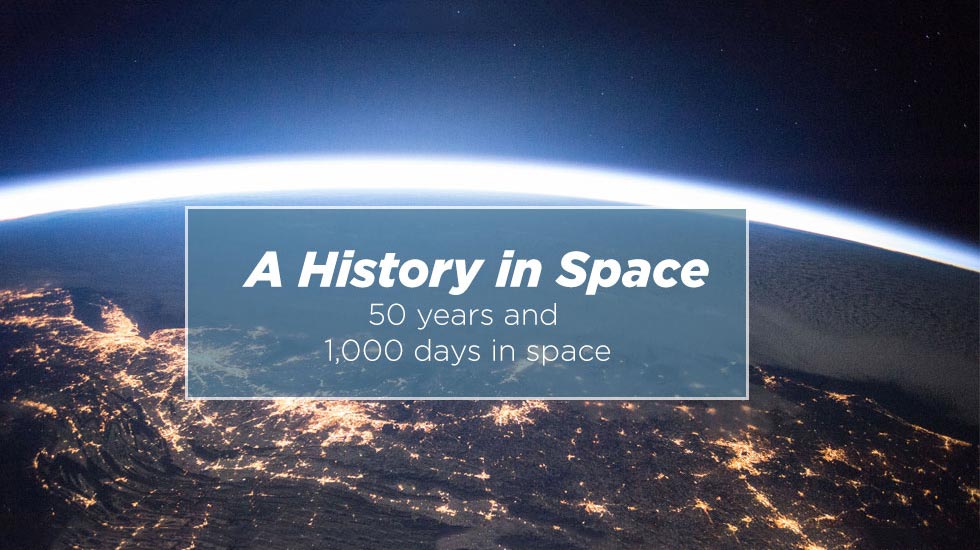A History in Space
The University of Tennessee has a long history in space, with more than 1,000 days in space and nine astronauts coming from the Tickle College of Engineering. The college has made a dramatic impact on NASA’s mission and we would like to share some of the highlights in celebration of Randy Bresnik’s safe return to Earth.
1958—UT’s (then) Department of Mechanical Engineering establishes a graduate program at the US Arnold Air Force Base. That program has since evolved into the UT Space Institute (UTSI).
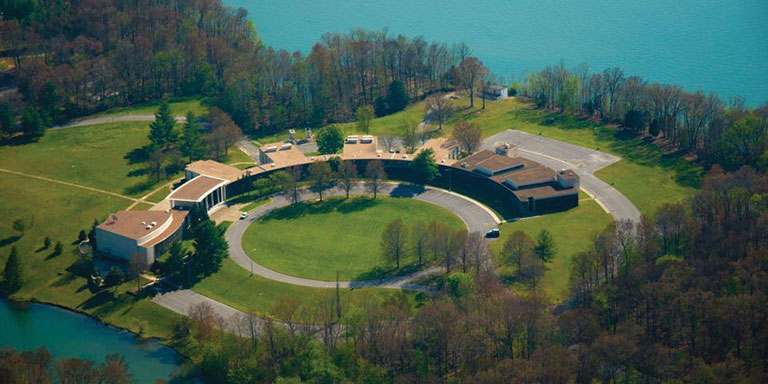
1960—Students at UT first have the option to add an aerospace engineering concentration to their mechanical engineering degree.
1964—The department formally changes its name to the Department of Mechanical and Aerospace Engineering, with PhD programs in both disciplines first offered.
1968—UT graduates its first aerospace engineers.
1969—Henry “Hank” Hartsfield begins coursework at UTSI and is selected to the astronaut program, becoming the first UTSI student selected. Eight more will follow.
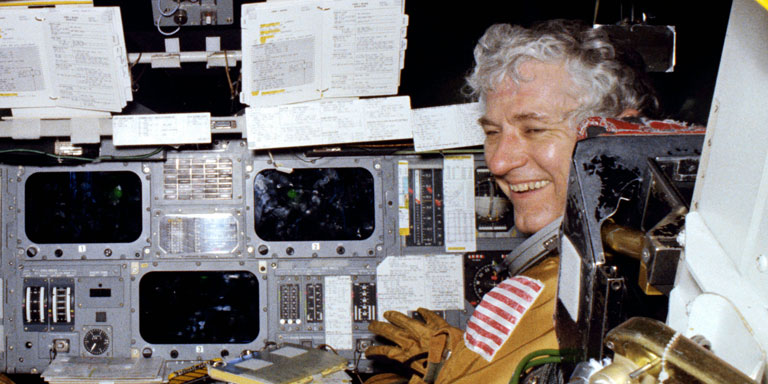
1982—Hartsfield becomes the first UT graduate in space when he pilots the Space Shuttle Columbia with former Apollo astronaut Ken Mattingly.
1991—UT aerospace engineering student Katherine Van Hooser accepts a job with NASA prior to graduating, having fallen in love with the space shuttle as a child.
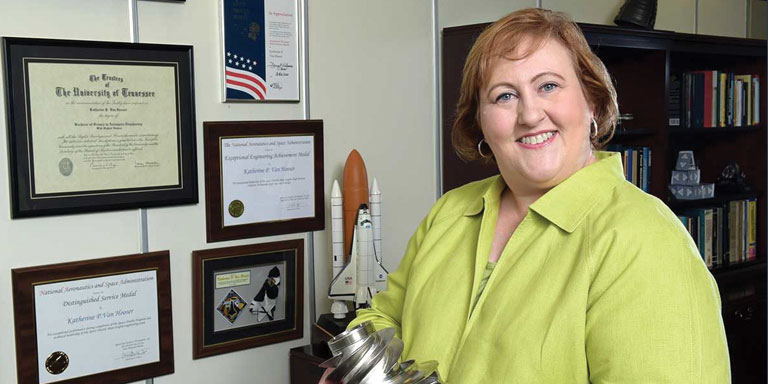
1992—Chris Hadfield, a Canadian pilot and UTSI grad, is selected to the astronaut corps. He will take part in two shuttle missions, one Soyuz mission, and two space station missions.
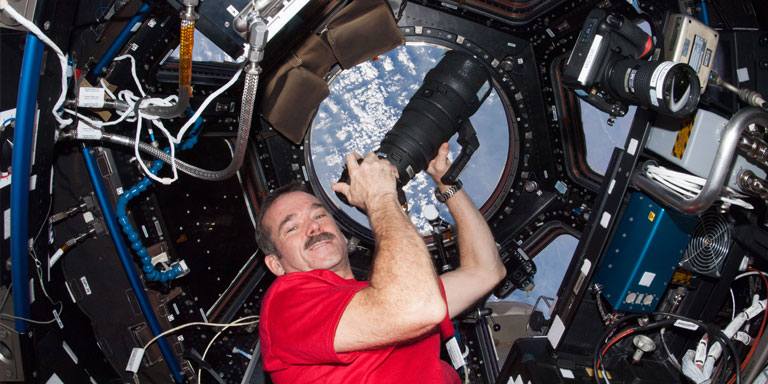
1994—Three UTSI grads—Dominic Gorie, Jeffrey Ashby, and Joe Edwards Jr.—are selected as astronauts. Combined, the three complete a total of eight shuttle missions.
1996—Scott Kelly completes his degree from UTSI and is accepted into the astronaut corps. He is UT’s most prolific astronaut to date, having spent more than 520 days in space across four missions.
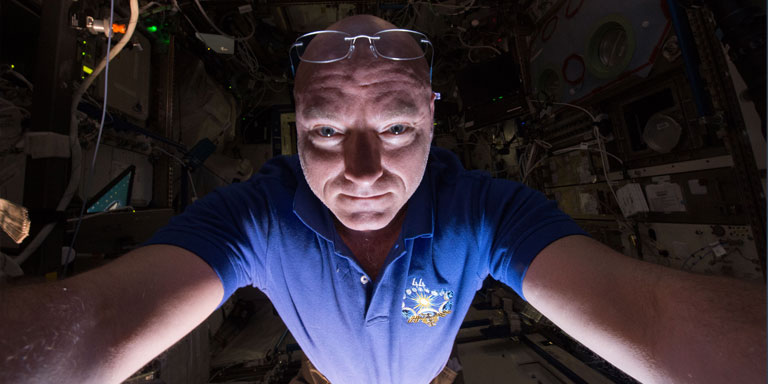
1998— UTSI grad William Oefelein is selected as an astronaut. He will later pilot the Space Shuttle Discovery on a 13-day mission.
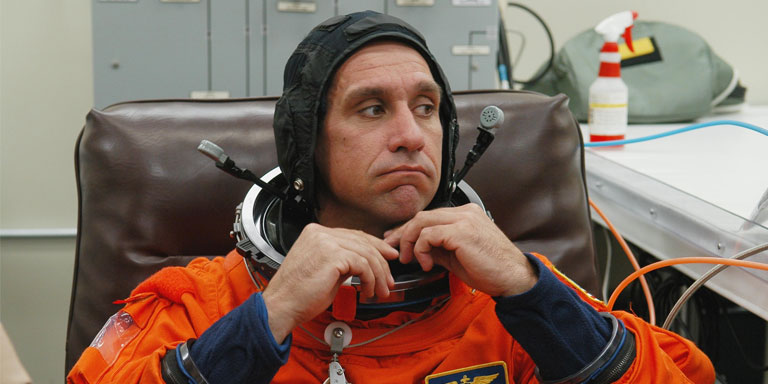
2000—UTSI grad Barry Wilmore is selected as a NASA astronaut.
2004—Randolph Bresnik becomes UTSI’s ninth, and, to date, most recent astronaut in space.
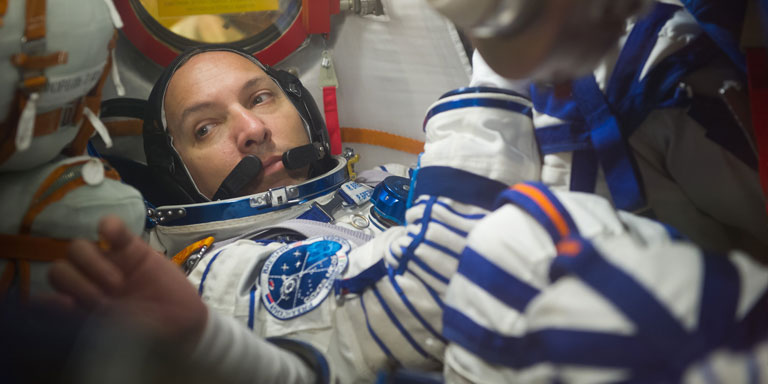
2005—Van Hooser is named head of the program responsible for the main engines of the very space shuttle program she grew up watching.
2009— Bresnik and Wilmore fly together aboard the Space Shuttle Atlantis, spending 11 days aboard the International Space Station.
2010—Kelly takes his third spaceflight and is commander aboard Expedition 26. This was Kelly’s first long-duration spaceflight.
2011—Van Hooser is named chief engineer of NASA’s Space Launch System Liquid Engines Element.
2011—Wilmore serves as CAPCOM, the person at mission control who communicates with the astronauts, or STS-35, the final mission of the space shuttle program.
2013—Hadfield records a cover of David Bowie’s “Space Oddity” aboard the International Space Station. It currently has 37 million views on YouTube.
2014—Wilmore, who earlier piloted the Space Shuttle Atlantis, heads to the space station for a six-month mission, serving as commander for part of the mission. At his request, NASA installs the SEC Network on the station so he won’t miss a UT football game.
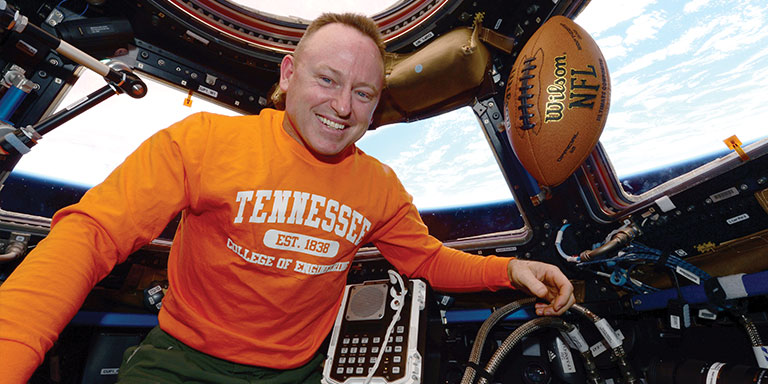
2015—Three MABE students—Justine Barry, Carol Miselem, and Meghan Green—join NASA’s Johnson Space Flight Center together upon graduation.
2015–2016—Kelly returns to the International Space Station for a study to compare his physiology after a year in space with that of his twin brother, who remained on Earth. As of Kelly’s safe return to Earth, UT astronauts have now spent a collective 993 days in space. Find photos from Kelly’s year in space on Instagram.
2016—Van Hooser is named manager of the Chief Engineers Office at NASA’s Marshall Space Flight Center.
2017—A team of MABE undergraduate students competes in NASA’s Mars Ice Challenge.
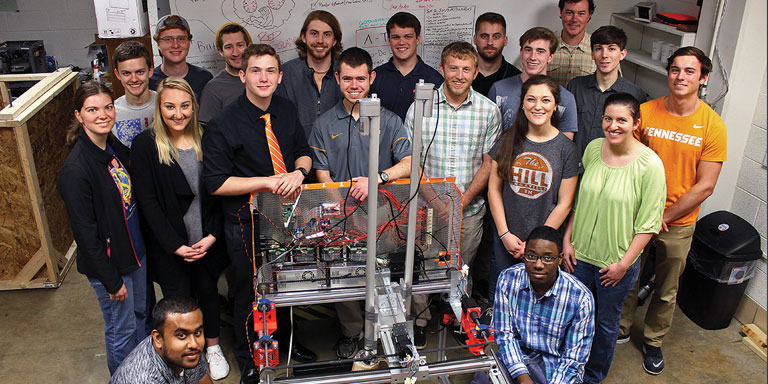
2017—NASA selects MABE Assistant Professor James Coder to lead a $9.9 million project, with fellow MABE Assistant Professor Stephanie TerMaath leading a key thrust of the project.
2017—Bresnik returns from the International Space Station in December, being the most recent UTSI graduate to do so.
